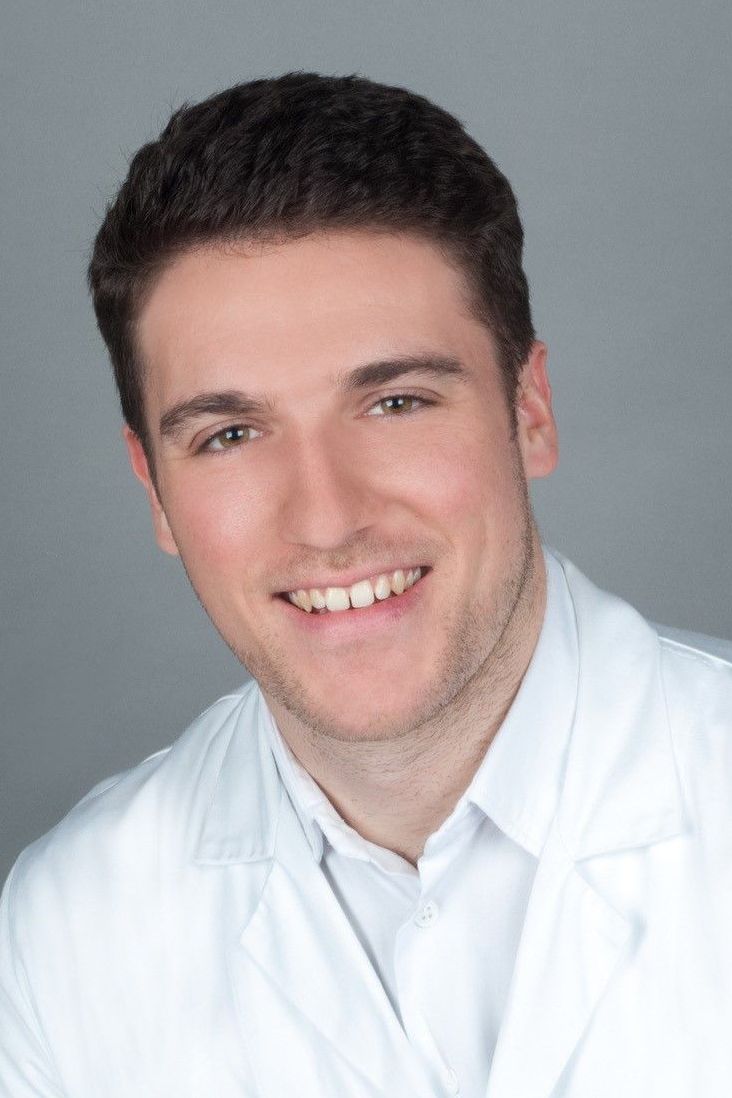Dr. Stefan Salminger

MedUni Wien RESEARCHER OF THE MONTH September 2020
Long-term implant of intramuscular sensors and nerve transfers for wireless control of robotic arms in above- elbow amputees
Prosthetic limb replacement in above-elbow amputees is challenging. The conventional 2-signal control limits speed and natural fluency of movements. Additionally, myoelectric signals picked up from the skin surface are susceptible to noise introduced by the environment, movement between the electrode and the skin as well as crosstalk between different muscles and changes in the skin impedance due to perspiration. This is one of the major reasons for prosthetic limb abandonment.
Therefore, a fully implanted myoelectric sensor system for wireless control of the prosthetic device was designed in collaboration with the Alfred Mann Foundation. The corresponding prospective interventional study includes three unilateral above-elbow amputees and reports for the first time the long-term (2.5 years) implant of wireless myoelectric sensors in the reinnervation sites following TMR (Targeted Muscle Reinnerveration: selective nerve transfers for multiplication of muscle signals in the stump region) and their use for control of robotic arms in daily life.
The patients showed substantial functional improvements using the implanted system compared to control based on surface electrodes. The combination of TMR and chronically implanted sensors may revolutionize robotic limb replacement in above elbow amputees.
Selected Literature
- S. Salminger et al., “Long-term implant of intramuscular sensors and nerve transfers for wireless control of robotic arms in above-elbow amputees,” Sci. Robot., 2019, doi: 10.1126/scirobotics.aaw6306.
- S. Salminger, A. Sturma, M. Herceg, O. Riedl, K. Bergmeister, and O. C. Aszmann, “[Prosthetic reconstruction in high amputations of the upper extremity].,” Orthopade, vol. April, 2015, doi: 10.1007/s00132-015-3113-0.
- S. Salminger, A. Sturma, A. D. Roche, J. A. Mayer, C. Gstoettner, and O. C. Aszmann, “Outcomes, Challenges, and Pitfalls after Targeted Muscle Reinnervation in High-Level Amputees: Is It Worth the Effort?,” Plast. Reconstr. Surg., vol. 144, no. 6, pp. 1037e-1043e, Dec. 2019, doi: 10.1097/PRS.0000000000006277.
- O. C. Aszmann et al., “Bionic reconstruction to restore hand function after brachial plexus injury: a case series of three patients.,” Lancet, 2015, doi: 10.1016/S0140-6736(14)61776-1.
- S. Salminger et al., “Functional and Psychosocial Outcomes of Hand Transplantation Compared with Prosthetic Fitting in Below-Elbow Amputees: A Multicenter Cohort Study.,” PLoS One, vol. 11, no. 9, p. e0162507, 2016, doi: 10.1371/journal.pone.0162507.
- S. Salminger et al., “Attachment of upper arm prostheses with a subcutaneous osseointegrated implant in transhumeral amputees,” no. 1000460758, 2016, doi: 10.1177/0309364616665732.